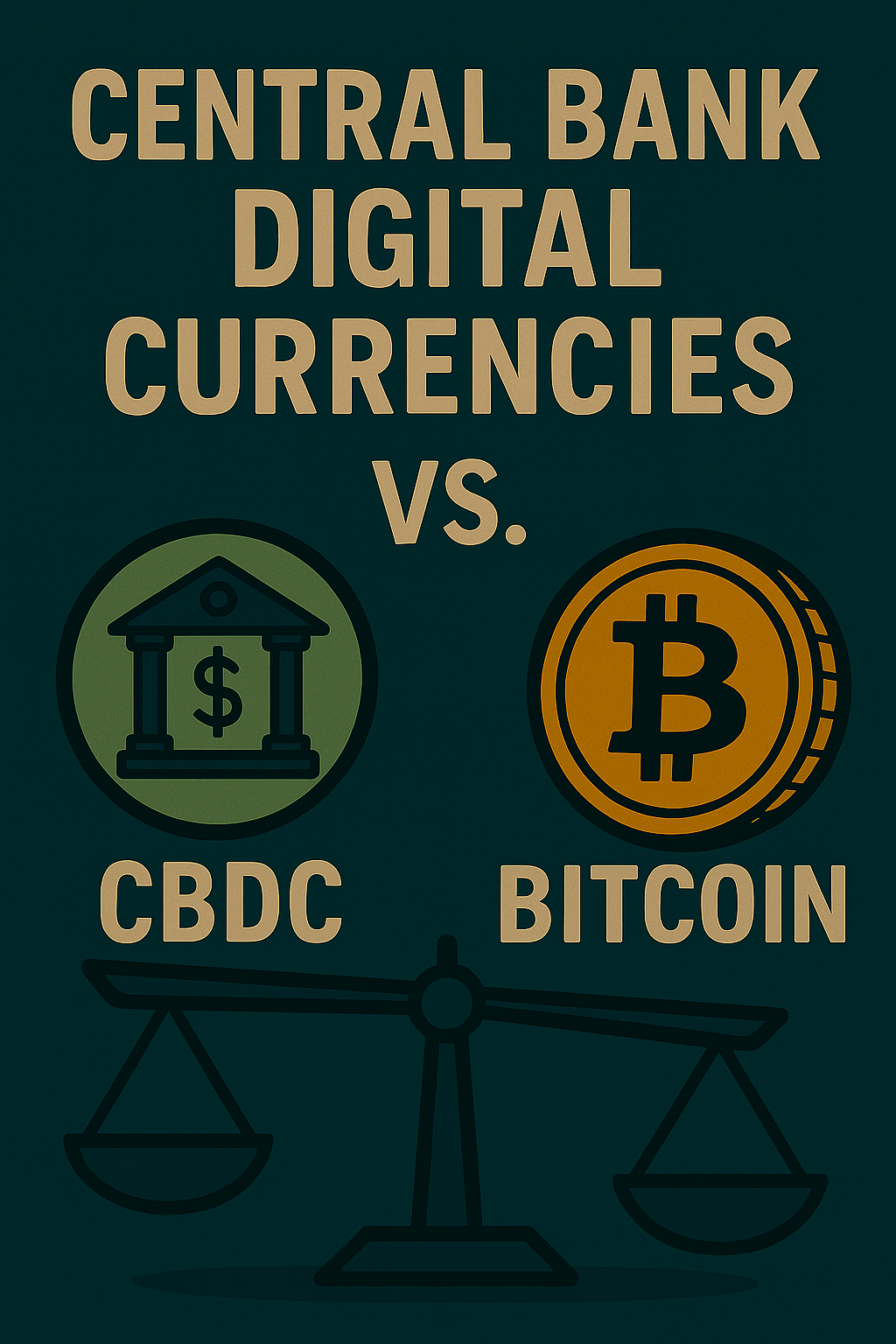As digital finance evolves, two opposing forces have emerged in the cryptocurrency space: Bitcoin, the pioneer of decentralized money, and Central Bank Digital Currencies (CBDCs), government-backed digital assets. Both aim to reshape the financial system, but they stand on opposite sides of the decentralization debate.
Bitcoin: The People’s Currency
Bitcoin was created in 2009 as a decentralized, permissionless financial system, free from government control. Its key features include:
- Decentralization – Operates on a blockchain without a central authority.
- Fixed Supply – Limited to 21 million coins, preventing inflation.
- Transparency – Transactions are publicly recorded, ensuring security.
- Global Accessibility – Anyone with internet access can participate.
Bitcoin embodies financial sovereignty, allowing users to control their own wealth without intermediaries. Its decentralized nature makes it resistant to manipulation, offering a hedge against inflation and traditional banking systems.
CBDCs: The Digital Dollar & Beyond
Governments worldwide are developing CBDCs to modernize their economies while maintaining financial oversight. Unlike Bitcoin, CBDCs are centralized, issued and controlled by central banks. Their key characteristics include:
- Government Backing – Represent official national currencies in digital form.
- Centralized Control – Authorities regulate transactions and circulation.
- Privacy Concerns – Governments could monitor and restrict user transactions.
- Potential for Inflation – Supply can be adjusted like traditional fiat currency.
CBDCs aim to improve payment efficiency and financial inclusion. However, critics argue that their centralized structure contradicts the principles of cryptocurrency, leading to concerns over surveillance and monetary policy manipulation.
The Clash Between Freedom & Control
The battle between Bitcoin and CBDCs highlights a fundamental question: Should money be controlled by governments or decentralized for public use?
- Bitcoin offers financial independence but faces volatility and regulatory challenges.
- CBDCs provide stability and official backing, but their centralized nature raises concerns about privacy and monetary control.
Governments may attempt to regulate Bitcoin, while proponents of decentralization continue to push for financial freedom. Ultimately, the future will be shaped by public adoption, technological advancements, and regulatory decisions.
Which Path Will Prevail?
The digital currency revolution is just beginning. Will CBDCs dominate global finance, or will Bitcoin continue to challenge traditional systems? The answer depends on whether people value freedom over control or stability over decentralization.
What do you think? Will Bitcoin remain the people’s currency, or will CBDCs redefine global finance? Let’s discuss!
Would you like any refinements or additional insights?
Bitcoin: The People’s Currency
Bitcoin was created in 2009 as a decentralized, permissionless financial system, free from government control. Its key features include:
- Decentralization – Operates on a blockchain without a central authority.
- Fixed Supply – Limited to 21 million coins, preventing inflation.
- Transparency – Transactions are publicly recorded, ensuring security.
- Global Accessibility – Anyone with internet access can participate.
Bitcoin embodies financial sovereignty, allowing users to control their own wealth without intermediaries. Its decentralized nature makes it resistant to manipulation, offering a hedge against inflation and traditional banking systems.
CBDCs: The Digital Dollar & Beyond
Governments worldwide are developing CBDCs to modernize their economies while maintaining financial oversight. Unlike Bitcoin, CBDCs are centralized, issued and controlled by central banks. Their key characteristics include:
- Government Backing – Represent official national currencies in digital form.
- Centralized Control – Authorities regulate transactions and circulation.
- Privacy Concerns – Governments could monitor and restrict user transactions.
- Potential for Inflation – Supply can be adjusted like traditional fiat currency.
CBDCs aim to improve payment efficiency and financial inclusion. However, critics argue that their centralized structure contradicts the principles of cryptocurrency, leading to concerns over surveillance and monetary policy manipulation.
The Clash Between Freedom & Control
The battle between Bitcoin and CBDCs highlights a fundamental question: Should money be controlled by governments or decentralized for public use?
- Bitcoin offers financial independence but faces volatility and regulatory challenges.
- CBDCs provide stability and official backing, but their centralized nature raises concerns about privacy and monetary control.
Governments may attempt to regulate Bitcoin, while proponents of decentralization continue to push for financial freedom. Ultimately, the future will be shaped by public adoption, technological advancements, and regulatory decisions.
Which Path Will Prevail?
The digital currency revolution is just beginning. Will CBDCs dominate global finance, or will Bitcoin continue to challenge traditional systems? The answer depends on whether people value freedom over control or stability over decentralization.
What do you think? Will Bitcoin remain the people’s currency, or will CBDCs redefine global finance? Let’s discuss!
If you have been impacted by crypto fraud, contact Digital Defenders Group for assistance.

No responses yet